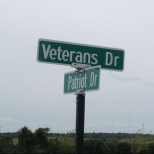
written by chris cannida, May 30, 2016
In the military, there is an event that occurs every week called a “Safety Brief”. The unit leader will offer several points of guidance to encourage safe living for the service member before they embark on their weekends or holidays away from the unit footprint. I was graciously invited to many of these. Some were intimidating (at least to me) as the commander barked stringent orders to remain free from self-induced conflict until their Monday morning return to work. Some were poignant if following recent news of loss within the unit as the leader nearly pleaded that no more loss be suffered.
Memorial Day – safety brief required
There are active duty service members and veterans who will spend time today, Memorial Day, remembering buddies lost in battle. Some will gather with others and pay verbal homage to those lost. Others will isolate themselves and review mental playbacks of the very moments of loss. Over the years, some have said to me they’d give anything to ‘go back’. Sometimes they will tell me they left their soul in Afghanistan and could retrieve it by ‘going back’. I’ve seen them fold their arms as if cradling someone, eyes drifting to a place I could not go. They have explained how tbeir best friend had died in their arms and how they are not sure full recovery is possible. I reflect on these soldiers and pray they have, in fact, survived and recovered. To all those walking in those boots, here is a safety brief to consider for days like today.
- Don’t drink and drive. Sure, tip your cups and bottles of beer in toast to those lost. Then, stay away from your motorcycles and cars. And guns.
Grief can easily morph into rage when mixed with alcohol and untangling the two can be difficult.
- Secure yourself with the support of others. This support can be your emotional seatbelt as you lean into those quiet moments that will drift in throughout the day. Honor the memory of your fallen buddy with the silence that the civilians around you can never understand. Then, come back. Remember that you’re here now, not there. You are bound to take countless mental trips back to there, sometimes alone, sometimes with unit comrades. Avoid letting those trips in your memory lead to permanent absence from the here and now.
There is a great purpose in the now. Let someone help you find it.
- Walk away from violence. Let the control center of your mind, your thinking self, take control over the, sometimes impetuous, will of your emotion. You were trained to block your emotional self from activation during combat so that you could perform. However, the emotion part of your brain needs a voice and may try to create a surge of expression now that you’re out of harm’s way and senses you are safe in the confines of the perceived mundane civilian world here at home.
Your emotions need a voice, though may also need help regulating and creating parameters for safe expression
- Wear proper coping gear. Pack your mental and emotional rucksack with the mission essential skills needed to survive. This includes emptying that ruck from the burdens of loss, conflict, guilt, or near-death experience that can weigh you down. Unload those non-essentials by allowing someone to listen as you tell your story. Give yourself permission to lay those burdens down. Instead, pack the following. Determination – to make the losses you suffered count for something. Calming and grounding skills – to keep yourself balanced when those memories threaten to tip you over. Trust – in the many supports that can help you continue the mission that is your life.
- Reach out before you take action on suicide plans. Talk to someone first. Resist belief in the lie of trauma and depression. You know, the thought that “no one cares” or “they wouldn’t understand” or “I’m beyond help”. Those are untrue statements, symptoms of the burden. Before you buy in, call someone or go to your local ER. Don the steps of a church. Head to your local VFW – those guys DO understand and will listen! Just reach out.
This Memorial Day and every day, take the time to remember and reflect. Then, reach out. Until then, be safe out there.
Wishing all survivors a peaceful and reflective Memorial Day.
For phone apps and grounding skills that might be helpful, check out: http://t2health.dcoe.mil
If you’re struggling:
Call 1-855-838-8255 or go to http://www.vets4warriors.com
Visit www.maketheconnection.com





